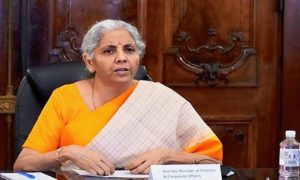Tax planning is a vital part of financial discipline for an earning individual. Generally, salaried individuals think about strategies and investment tools to save taxes on their earnings two times in a year — during the last quarter of a fiscal year and at the start of a financial year. When a new financial year begins, employers ask their staff to submit an investment declaration, for which the employees need to provide proof of investments during the last quarter of the fiscal year.
ax experts opine that tax planning should not be a random exercise and one should not leave it for the beginning or the end of the year. Doing last-minute tax planning may result in wrong investment decisions on your part. A well-thought-out investment plan with tax saving in mind not only saves your hard-earned money but also helps you conform to the tax obligations under the income-tax laws.
If you are searching for tax-saving investments, there are multiple options available in the market. Tax saving instruments like NPS, PPF, ULIP, ELSS and Sukanya Samriddhi Yojana are quite popular among taxpayers.
NPS is very popular as an investment option because the returns are much higher in comparison to other investment schemes. It also offers a range of investment options and a choice of pension funds to subscribers. NPS offers additional tax benefits by allowing a taxpayer to save tax under three different sections of the income tax laws. A deduction on contribution of up to Rs 1.5 lakh can be claimed under the Section 80CCD(1). There is an additional deduction of up to Rs 50,000 under Section 80CCD(1B). Lastly, employees get additional tax benefits on investment routed through their employer under Section 80CCD(2).
Read More: HDFC Bank: FPIs cut stake in most-valued lender by 446 bps in Q4; what’s ahead?
Public Provident Fund
PPF is a savings-cum-tax savings investment tool that helps you build a retirement corpus while saving on annual taxes. Currently, PPF offers 7.1 percent interest rate annually. One of the most preferred long-term tax-saving investments available today, it offers tax deduction benefits under Section 80C up to a maximum of Rs 1.5 lakh annually. A PPF subscriber has an option to pay the amount lump sum or in multiple instalments during a financial year. It is a scheme that combines three components – tax savings, returns and safety.
Read More: TAC Infosec IPO allotment: How to check status, latest GMP and details here
Unit Linked Insurance Plan
ULIP is an insurance plan that comes with the dual benefit of growth of your money to fulfil long-term goals and a life cover to give your family financial protection in the event of any unfortunate happening. Since there is no lock-in provision till retirement like in NPS, ULIP is considered more flexible, and it also allows periodic withdrawals. One disadvantage is that the policyholder is stuck with the insurance company for the rest of the term, but in NPS, the investor can change the pension fund manager. Under Section 80C of the income tax laws, a tax deduction of up to Rs 1.5 lakh can be claimed on premiums paid towards a ULIP.
Equity-linked savings scheme
Read More: Stock Market Updates: Sensex Soars 500 Points, Nifty Tops 22,600 For First Time
ELSS is a type of mutual fund, also known as tax-saving mutual fund, which allows a taxpayer to claim deduction of up to Rs 1.5 lakh annually under Section 80C of the Income Tax Act, 1961. ELSS comes with a 3-year lock-in period, offering opportunity to earn higher returns and save on taxes. It also gives an investor a flexibility to invest either lumpsum or via SIP mode. ELSS attracts long-term capital gains tax at 10 percent on redemption of units but if the overall gain is within Rs 1 lakh limit, it gets exemption from tax.
Sukanya Samriddhi Yojana
Read More: Stock Market Updates: Sensex Soars 500 Points, Nifty Tops 22,600 For First Time
Sukanya Samriddhi Yojana (SSY) has been providing a higher rate of interest over other savings plans for many years. SYY, which currently offers an annual interest rate of 8.2 percent was launched to offer financial security for the girl child. Just like the PPF, the interest earned is tax free and there is an annual cap of Rs 1.5 lakh on the investment. The payment period for an SSY account is 15 years and the account matures in 21 years (minimum). Tax deductions of up to Rs 1.5 lakh are allowed annually on premium paid towards SSY.





































